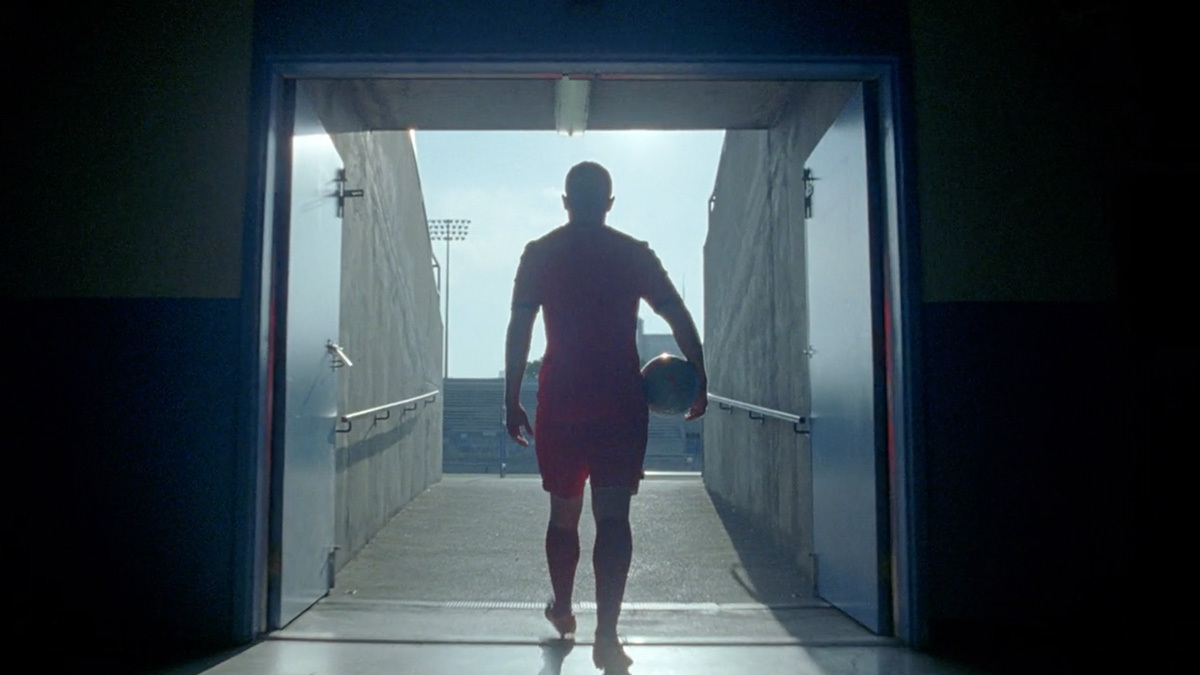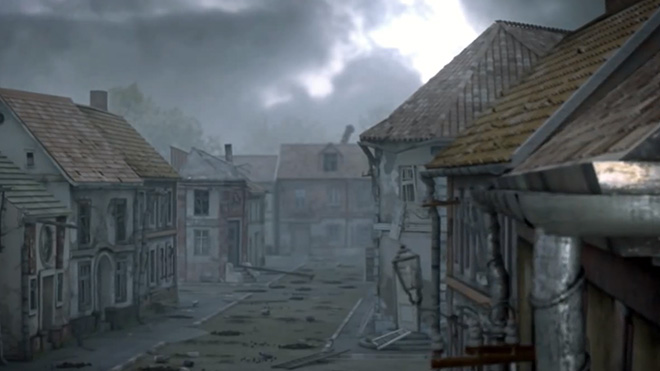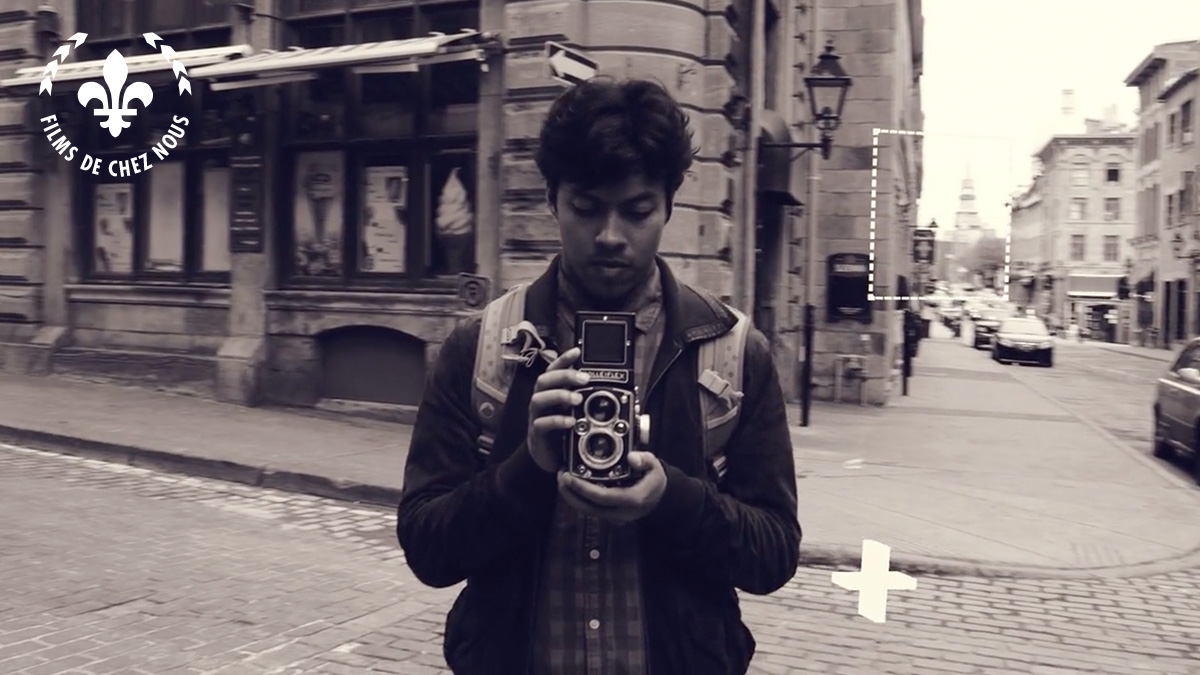Perhaps it was the middle of January in the present year that I first looked up and saw the mark on the wall…
Anderson Wright’s “The Mark on the Wall” brings to life Virginia Woolf‘s first published story in an evocative and experimental short film. This adaptation captures the essence of Woolf’s stream-of-consciousness narrative, where a seemingly insignificant mark on the wall triggers a profound exploration of memory, identity, and the passage of time. Set in the vibrant backdrop of CDMX, the film invites viewers into a reflective and introspective journey that mirrors Woolf’s literary style, blending the boundaries between reality and imagination.
Created with a close-knit team of friends and a talented cast, “The Mark on the Wall” stands as a testament to collaborative filmmaking. Wright’s (The Diver) interpretation honors the original text while infusing it with a contemporary visual language, making the abstract and philosophical themes of Woolf’s work accessible to a modern audience. The film’s minimalist setting, centered around a resilient wall, serves as both a canvas and a metaphor, allowing the narrative to unfold in a way that is both intimate and expansive. This short film is a must-see for fans of Woolf and those who appreciate thoughtful, experimental cinema.
“The Mark On The Wall” is based on Virginia Woolf’s first published story. What drew you to this particular story, and how did you approach adapting it into a short film?
Last summer I connected with the film financing company Trust about one of their project briefs, titled “Expect The Unexpected.” The brief was wide open, and Trust would give me total creative freedom to make the film I wanted, as long as I could pitch a concept that showcased the unexpected. This was intriguing. For reasons I’m still unsure of, my mind went to the 2017 film A Ghost Story (it’s one of my all-time favorites). Upon rewatching it, I noticed that the ghost character knocks a book off a shelf at one moment, revealing pages of text from Virginia Woolf’s short story “A Haunted House.” Some Google searching led me to an interview with the film’s director, David Lowery, where he talks about how the story was a major reference. This discovery took me to the library, where I checked out a book of Woolf’s other short stories, which began with her very first published work: “The Mark On The Wall.” It was perfect for me, it was perfect for the brief.
Woolf’s writing is known for its stream-of-consciousness style. How did you translate this literary technique into a visual and cinematic experience?
I love the way that Woolf’s writing style evolves over the course of “The Mark.” The hero character is depicted in the early passages of the story as someone who’s totally in control of her thought process. She thinks logically and clearly about the mark on the wall, and the prose reflects this. Woolf begins the story with a structured, formalist approach. Her sentences are terse; her language is utilitarian and concise. I wanted to establish a crisp, precise visual language to match. Locked off cinematography, clean cuts, methodical pacing, etc. As the character dives deeper and deeper into her imagination, Woolf’s prose takes flight. The character’s thoughts blossom into lengthy hyper articulate musings, meandering in a stream-of-consciousness style, often interrupting herself to share a new image or idea. She nearly goes off the rails heading into the climax, as her thoughts are presented breathlessly over the final pages of the story. I was very excited to evoke this runaway train vibe in the film. We did this with a number of techniques, such as introducing camera movement for the first time during this climactic sequence. I wanted it to feel like the character was getting swept away by the current of her own thoughts — but then, GASP, she’s suddenly pulled up for air. Woolf returns to her original rigid, terse style in this final scene, and I wanted the cinematic experience to feel the same for audiences. Whereas the hero’s stream-of-consciousness imagination sequence needed to feel romantic, and whimsical, and full of possibility, the finale needed to hammer home the blunt inescapability of our mundane reality. To me, that translated to detached static wide frames and long pauses of silence.
What were the biggest challenges in adapting a literary work from a renowned author like Virginia Woolf, and how did you overcome them?
I would say boiling the story down to its essence in order to suit the confines of a short film. Woolf’s prose style is very languid, and the writing is all so good. It was hard to choose what was really important and what was superfluous — in terms of the narration, especially — for a super contained three minute film.
The story’s contemplation of a seemingly insignificant mark becomes a profound exploration of thought and existence. How did you visually represent this theme in the film?
Riffing on my previous answer, I’d say it was largely about creating an interior world for the character that feels BIG, and presenting that in contrast to the reality of the quiet, ordinary life transpiring outside her head. I wanted audiences to appreciate that to be swept up in one’s own thoughts can be a grand, magical experience. Swelling strings, flurries of imagery, and a breathless voice over take us there, until *record scratch* we’re reminded of the practical tasks and responsibilities we deal with every day. Getting a coffee, cleaning a scuff on your wall, etc.
Can you discuss your creative process in terms of set design and cinematography to capture the atmosphere and tone of Woolf’s story?
This answer could go on for a looong time, but to keep it brief:
Ana Blizzard (production designer) did a mind-blowingly good job of taking an extremely limited budget and creating fully fleshed out environments on screen. We wanted each scene to look totally unique, so audiences could feel like they were being taken on a journey through the history of the apartment and all its occupants. She has such a good eye for details, and we traded a lot of references back and forth in lookbooks and so on. We took inspiration from Susan Sontag’s New York apartment for the foundational present-day scene, Ernest Hemingway’s office for the detective scene, Frida Kahlo’s home for the painter scene, etc.
Flavia Martinez (cinematographer) took a painterly approach to the imagery and I couldn’t be happier with her work. She did much more than just make the images look beautiful, she helped shape the language of the film. This was achieved through numerous conversations leading up to production, beginning 6 months prior when I shared the script with her while on a commercial together in Beirut. It was her idea to bring zooms into the visual language and we built it out from there. We used slow zooms for the hero character’s moments of contemplation; if you look closely, you’ll notice that every shot of the hero is a slow zoom, until her husband interrupts her train of thought. From that point forward, everything is totally static, with one exception: the reveal of the snail. I loved the idea of using gentle movement to underscore the character’s journey through her imagination, and then abruptly breaking that with stillness once we’re back in reality.
Finally, since this project was a work of literary adaptation, I thought it was important to reference texts in addition to imagery. Flavia introduced me to Juan Rulfo’s Pedro Paramo, which I found inspiring as it pertained to ghosts living among us. Spirits fade in and out of the world of that story, and it informed the way I conceived the surrealist flourishes of movement in the climax of our film.
How did you handle the inner monologue of the narrator in the film? Did you use voiceover, visual cues, or a combination of both?
The inner monologue was fully scripted. We held a recording session with the brilliant lead actor Natalia Plascencia, where she performed the monologue in a session with me, Renata (producer), and Daniel (sound mixer). Natalia would basically smile when she knew she nailed it, and the rest of us would nod along, so excited by her amazing talent.
Woolf’s story is deeply introspective and philosophical. How did you ensure that the film remains engaging and accessible to a modern audience?
To be honest, this calculation never crossed my mind. The story felt engaging and accessible to me! Hopefully modern audiences agree haha.
How did you select and direct the cast, particularly the actor portraying the narrator, to convey the subtle complexities of the character’s thoughts and emotions?
This is all Natalia — and Martijn! She elicited the character’s inner world through her own skill and understanding of the source material. Natalia and I spoke about the character before the shoot and she came to set with a clear vision for how to bring that person to life. It was evident within 5 seconds that she was going to crush it. I remember watching the monitor while shooting the first take of the opening shot of the film and thinking “oh wow, that’s exactly it.” I would say that much of my direction was focused on the timing of her movements within each frame, especially the longer takes. I had a strong sense of how the film’s rhythm should feel, and the cadence would of course largely be dictated by her actions. I wanted to fully render the pacing of Woolf’s writing on screen. Movement of language is such a meaningful element of the prose in the original story!
Martijn Kuiper, who played her husband, is also a wonderful actor who brought his love of craft to the project. We sat down before the shoot and spoke about his character for a while, which was a fantastic conversation that I really enjoyed. It’s great to vibe with an actor before working with them, I know it helped us collaborate decisively on set. Acting is hard work, but like Natalia, he made it look easy! It’s honestly just so nice to work with amazing actors. Any time I offered up even the smallest idea, they’d take it and run with it, bringing it to life in a way that felt fully formed and emotionally true. It was so cool to watch.
What are some of your favorite short films that you’ve seen?
Oooooh boy. Too many to name, but I will say that one of my all-time favorites is Claudia Barral’s “__ / __ / __,” which I returned to when thinking about set design for “The Mark On The Wall.” I’d highly encourage anyone to watch it, I find it so mature, tasteful, and hauntingly imagined.




